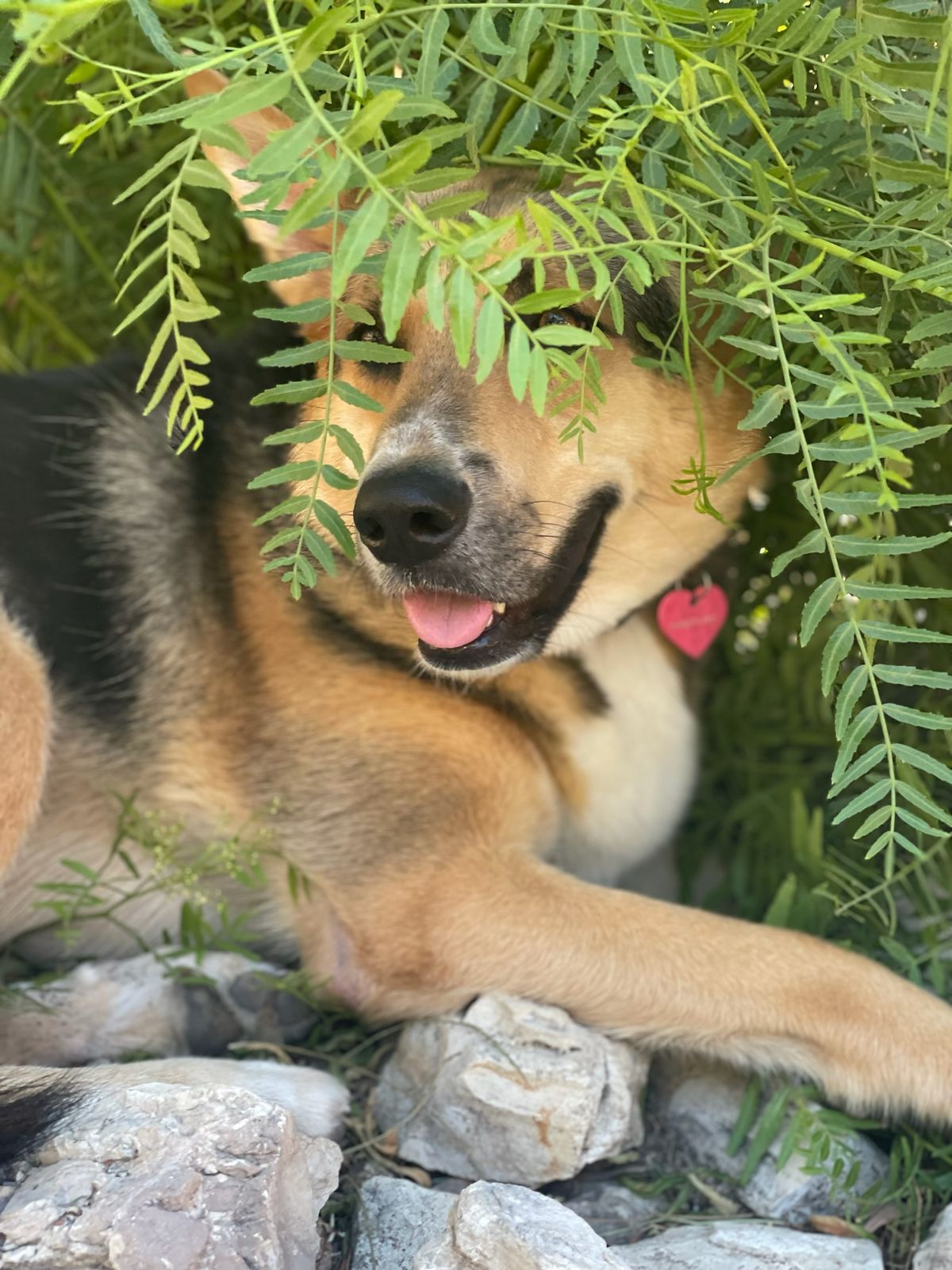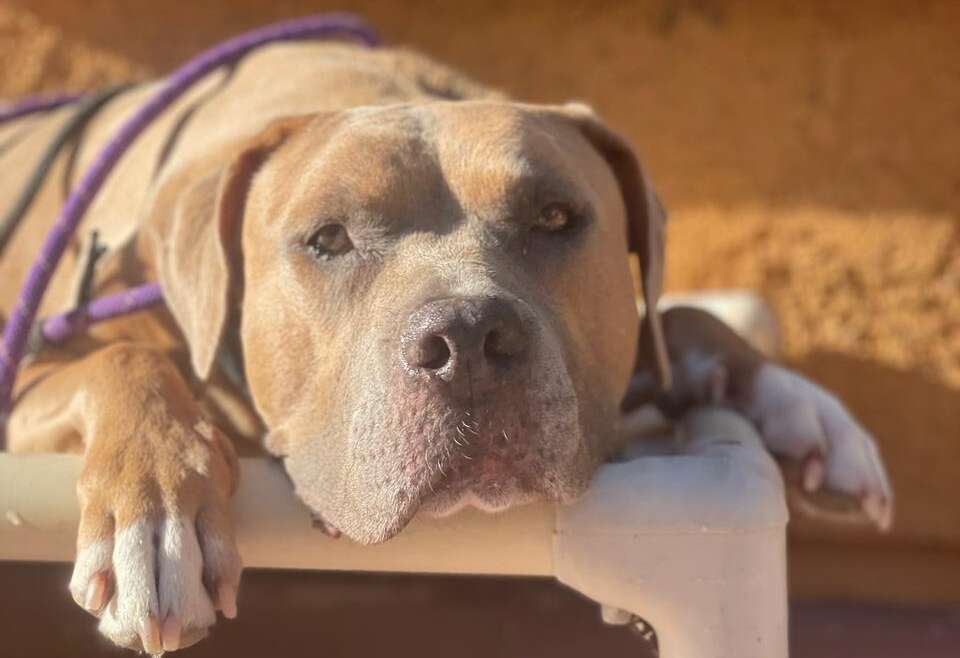Human beings are social creatures and have found a way to understand each other’s body language in the most subtle ways. It is said that 80% of human communication is non verbal. So we can detect and understand a fearful position anywhere. Dogs can do the same thing. However that is where the closest parallels of behavior stop when it comes to calming a scared human versus calming a scared dogs. You see, as much as a dogs are social creatures like we are, their way of calming one another is somewhat different than the ways we do it. What we tend to do as humans is first to try to coddle the fear away. Speaking in soft tones in order to comfort the other and most of the times that works. Hence why we do the same with our scared dogs. However, with the understanding of dog psychology one quickly learns that with dogs, you get what you pet. So instead of helping your dog become less fearful by coddling them, what humans are doing is essentially reinforcing the exact behavior they wish to change. What a conundrum, right? How to help a dog that is scared without coddling them? Think about a nurse’s state fo mind when assisting a scared patient. Or a coach leading their charge to accomplish a difficult task and cheering them going forward. What these people have in common is that they take charge; they handle the situation into a more favorable outcome. It is not coddling it is directing. It is creating new grooves of behavior in order to get the other to a more favorable state of mind. That is how one calms a scared dog.

Let’s dive into concrete examples, shall we?
Shut Down Dog
You are a rescue worker and you are in the shelter. You meet a very scared dog. The type one would classify as shut down. A shut down dog is one that basically wants to disappear. They would rather pancake on the floor and melt than move. These dogs are in a 100% state of flight. Instinct has basically abandoned them and they have surrendered to an abject state of fear. To encourage these dogs to come back to what it means being a dog; the nose will always be your healthiest bet. Get something that smells really good (cheese, cat food, bacon, etc…) and place within a 3 feet distance from the dog. Allowing the nose to take charge will get a dog to go back to dog. What that means is that dogs are curious beings, they instinctually follow their nose. In most cases, you get the nose, you get the dog; since it controls 60% of the brain. Once the dog starts moving towards said smelly object, move it. If you can get the dog to start moving using it’s nose, then 50% of the battle is won. Put a leash on the dog and have them follow the smell by walking around with it. Place it in your hand, close to the dogs nose, movement will help get the (dog’s) body into a healthier state and then it’s just a matter of coaching the dog out of it’s “comfort zone” and repeating it with different smells.
Dogs scared of loud noises
It is 4th of July and the fireworks are starting soon. Your dog hates loud noises and is already starting to display a pacing behavior, what to do? Take them for a long walk. Drain the excess energy in the body. Whatever the static of the day is giving out (real or otherwise) help yourselves by draining most of it away by tiring the body. Both humans and dogs can be helped immensely when stressful satiations present themselves by having a tired body take over the mind. Place your dog is a smaller space – a crate is usually the best place for dogs scared 4th of July fire works. It prevents them for going into flight – fight. Make the area peaceful, if you want to add some light music to dissipate the sounds, feel free to do so. Then surrender and trust that the work you did all year prepping for this moment, will work itself out. Breathe and know that your dog is in a safe space and that you guided them for this exact moment. Be the safe energy that knows that these are just loud noises. Breath and your dog will breathe.
Dogs scared of something on a walk
You are walking your dog and there it is, the vents on the ground. The ones your dog will not, in anyway shape or form walk through. But you can’t deviate, then what to do? Just keep walking… know that the vent is not dangerous, apply some pressure on the leash and walk with confidence. The more confidence you have, the higher chances you have that your dog will believe and imitate that confidence. You lead, they follow: that’s a coach, that’s a leader. Feeling bad for your dog at his exact moment will only serve to validate that the vent is something to be sacred about (and we know it isn’t). Coddling your dog in this moment will only serve to reinforce the idea that they are right to fear the vent. If you have been reading these blogs for a while you will know the importance I place on having an intention. If your intention if to move your dog past their irrational fear of the vent then stick to your gut. Keep walking as if the surface of the ground hasn’t changed, repeat this passage as many times as it is necessary for you and your dog to walk through it with joy and then keep walking. They will come around if one sticks to their intention.
Remember that when it comes to dog psychology and the way one relates to their dog, your job as a human is protection and direction. We live in a human world. So our jobs when it comes to our dogs will always and forever be one of guiding them through our world. Guiding one through fear is one of the most meaningful experiences in life. Be that for your dog. If the need to feel bad for them arises, then try to do it away from them. Let them go through life knowing that you are this beacon of confident energy that they should want to follow. At the end of the day that is your sole responsibility when it comes to caring for your dog, scared or not.
Happy training!



